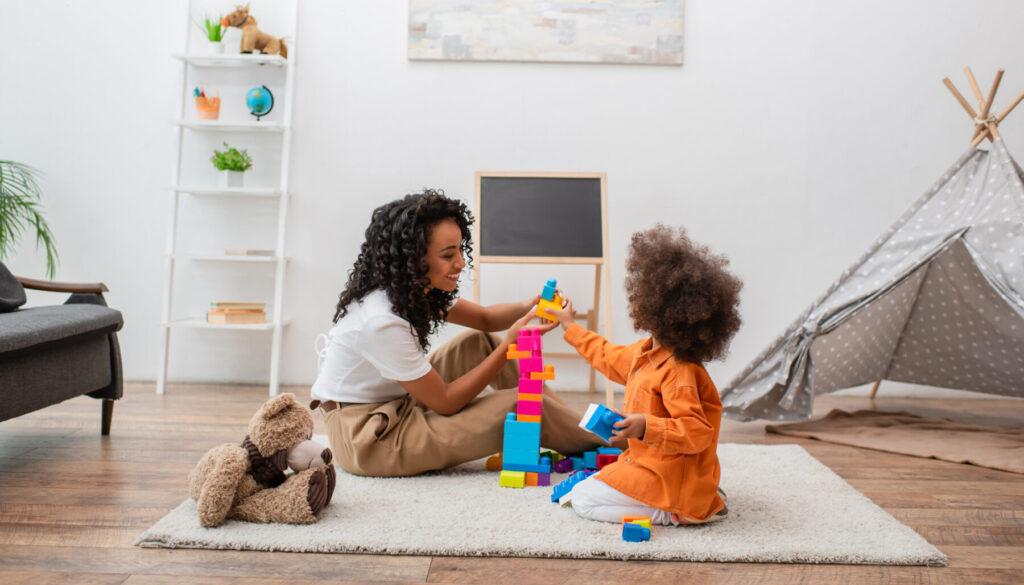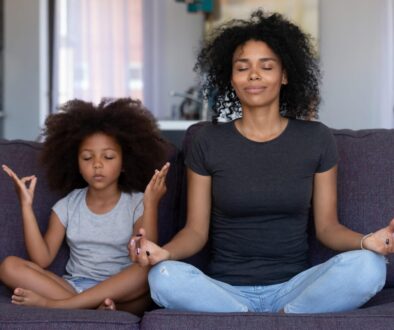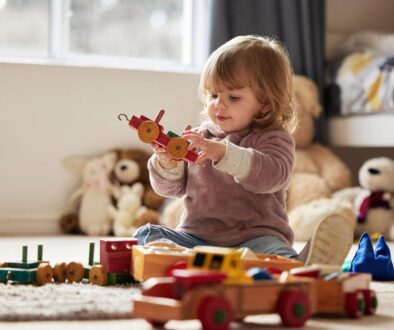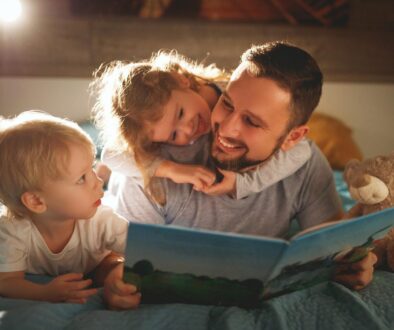Stages and Ideas for Block Play

Block play is highly beneficial and holds significant importance for children’s development. Blocks provide many opportunities to enhance cognitive skills which include problem-solving, spatial reasoning, logical thinking, and mathematical concepts. Children learn to plan, strategize, and execute their ideas while manipulating blocks to build structures. Manipulating blocks of different shapes and sizes also helps develop fine motor skills and hand-eye coordination. Children practice precise movements, stacking, and fitting blocks together, which strengthens their manual dexterity and control. Blocks provide an open-ended play experience, allowing children to engage their imaginations fully. They can create endless structures, buildings, and scenarios, promoting creativity, storytelling, and imaginative play.
Block play typically progresses through various stages as children grow and develop. Although the specific stages may vary, here are some common stages observed in block play:
Sensory Exploration: In the early stages, infants explore blocks primarily through their senses. They grasp, mouth, shake, and manipulate blocks, learning about their size, weight, texture, and sound. Sensory exploration helps infants develop their fine motor skills and hand-eye coordination.
Nesting and Stacking: Toddlers begin to understand the concept of nesting and stacking blocks. They enjoy fitting blocks inside one another or stacking them vertically. Initially, the structures may be unstable, but toddlers gradually develop basic spatial awareness and coordination.
Bridging and Enclosure: As children reach preschool age, they start experimenting with more complex structures. They learn to bridge gaps between blocks or create enclosures by placing blocks side by side. These creations often represent simple bridges, fences, or houses, allowing children to explore stability and balance.
Building Simple Structures: Children will begin to construct more elaborate structures with increased stability. They may build towers, walls, or simple houses using a variety of block shapes and sizes. Children begin to understand the need for a stable base and how to stack blocks in an organized manner.
Complex Structures and Patterns: As children’s cognitive and fine motor skills develop further, they engage in more complex block play. They create intricate structures, experiment with patterns, and incorporate more advanced concepts like symmetry and balance. Children may start building bridges, castles, or elaborate cities with different architectural features.
Imaginative and Symbolic Play : Older children often engage in imaginative and symbolic block play. They use blocks to represent objects, characters, or scenes from their imagination or the real world. They construct detailed storylines, engage in role-playing, and integrate other toys or props into their block play.
To maximize the benefits of block play, provide children with a variety of blocks in different shapes, sizes, and materials. Allow time for uninterrupted play, both independently and with others. Offer guidance and prompts to extend their learning, but also encourage free exploration and creativity. Block play should be seen as a valuable and integral part of a child’s play and learning experiences.
Here are some ideas for block play with young children:
Free building: Allow children to explore and create their own structures using blocks of various shapes and sizes. Encourage them to experiment with different combinations, stacking, and balancing blocks to build towers, houses, roads, or any other imaginative structures they can think of.
Sorting and categorizing: Introduce sorting activities using blocks. Ask children to categorize blocks by color, shape, size, or pattern. They can create groups or patterns with blocks, promoting early math skills and logical thinking.
Block challenges: Set up specific challenges for children to complete using blocks. For example, challenge them to build a block maze, create a block sculpture, or replicate a design from a picture or book.
Collaborative building: Encourage children to work together to build a structure collaboratively. They can take turns adding blocks, discuss ideas, and problem-solve together. This activity fosters teamwork, communication, and cooperation.
Storytelling and role play: Invite children to use blocks to create scenes and settings for storytelling or role-playing. They can build houses, castles, or cities for their toy figures or act out stories using block structures as props.
Block prints and patterns: Use blocks dipped in washable paint to create prints and patterns on paper. Children can experiment with different block shapes and colors to make unique artwork.
Sensory block play: Add sensory elements to block play by incorporating materials like sand, water, or fabric. Children can build structures in a sensory bin filled with sand or create floating structures in water. This multisensory experience enhances creativity and tactile exploration.
Remember to provide a safe and open space for block play, and join in the fun by engaging with your child, asking open-ended questions, and showing interest in their creations. Block play is an opportunity for children to explore, learn, and unleash their creativity while having fun.





